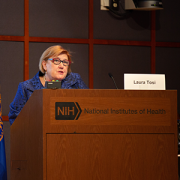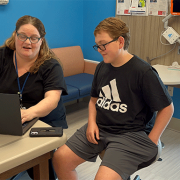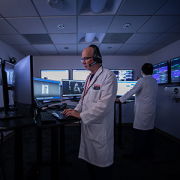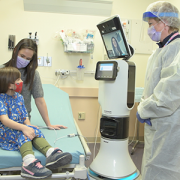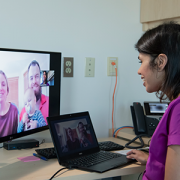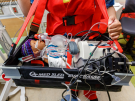Technology bridges knowledge gaps in rare bone disease care
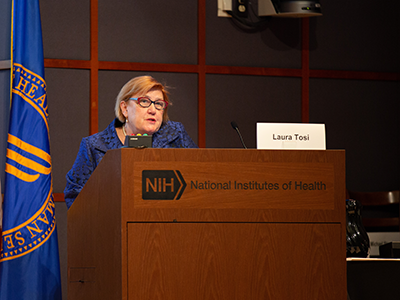
Dr. Tosi and colleagues presented on the NIH Rare Disease Day 2020 panel, Nontraditional Approaches to Improving Access for Rare Diseases.
As part of the global observance of Rare Disease Day in February, the NCATS and NIH Clinical Center hosted a special event to raise awareness about rare diseases, the people they affect and NIH research collaborations under way to address scientific challenges and advance new treatments.
This year, Children’s National Hospital orthopaedic surgeon Laura Tosi, M.D., took part in an afternoon panel, Nontraditional Approaches to Improving Access for Rare Diseases, where she outlined her work as the faculty chair of the Rare Bone Disease TeleECHO, a virtual meeting that allows care providers and experts to come together via the Zoom platform, discuss diagnosis of specific disorders and present cases for group input.
Dr. Tosi and the Rare Bone Disease Alliance have called Project ECHO Rare Bone Disease a game changer for care of these complex conditions. Rare bone disorders are only about 5% of all birth defects but include 461 skeletal disorders caused by 437 genes – making it difficult for any physician to see enough cases of any one disorder to correctly diagnose and treat it.
“Most doctors are like me, a pediatric orthopaedic surgeon. I need to know a lot of different rare diseases and it’s hard to keep everybody on the cutting edge,” Dr. Tosi says. “Even though we have found the genes for most of the disorders, the phenotypic overlaps, shortage of specialists and the multi-disciplinary needs of so many of the patients add to the challenges.”
So 7 months ago, Dr. Tosi joined together with colleagues at the Rare Bone Disease Alliance and the Osteogenesis Imperfecta Foundation to launch Project ECHO Rare Bone Disease. The now monthly telehealth meeting engages a distinguished faculty of experts from around the world and from across the spectrum of care for these rare bone disorders, including specialists in genetics, endocrinology, orthopaedics and others.
Project ECHO is a specific model for bridging distance and creating a network of professionals, with the goal of leveling the playing field for all by making vital information accessible to everyone, regardless of their location. In healthcare the model transcends traditional “telemedicine,” however. The program, launched from the University of New Mexico, self-describes itself as “telementoring, a guided practice where the participating clinician retains responsibility for the patient” but is able to discuss diagnosis and therapeutic recommendations with a set of esteemed faculty via a regular virtual meeting series.
In the case of the Rare Bone Disease TeleECHO, the ECHO’s faculty decided on two major foci for the curriculum. Half of the content is about how to make the right diagnosis and the other half shares the latest information about specific diseases. The sessions also offer free CME to attendees.
Dr. Tosi says that while finding cases to discuss can sometimes be challenging when it comes to rare bone diseases, she takes responsibility on herself to make sure the content is robust each month. So far the meetings have attracted between 40 and 90 participants per session – a great engagement rate for such a young teleECHO program.
“I believe ECHO advances knowledge of healthcare and democratizes it by offering universal accessibility across the globe,” Tosi notes.
The Rare Bone Disease Alliance, which consists of 12 organizations, experts and patient families working together, is now deciding what’s next for the Rare Bone Disease TeleECHO. They may develop disorder-specific ECHOs, are studying the frequency of the sessions and how best to improve participation for all sessions. The idea is to increase access to this expertise even further, as it could have critical impacts on patients worldwide living with these rare diseases.
In terms of key take-aways from the panel of experts at Rare Disease Day, the hope is that more disease groups might leverage this type of technology to connect people in nontraditional ways. Doing so has the potential to ensure that everyone with a rare disease receives the best support and care possible because their doctors have the knowledge they need when they need it.
Watch more sessions from the NIH’s Rare Disease Day 2020.


